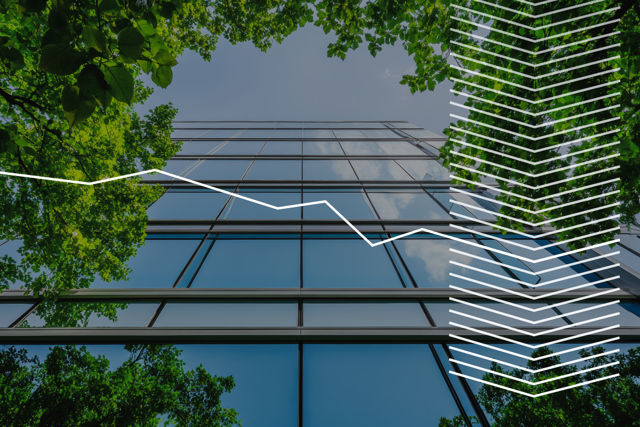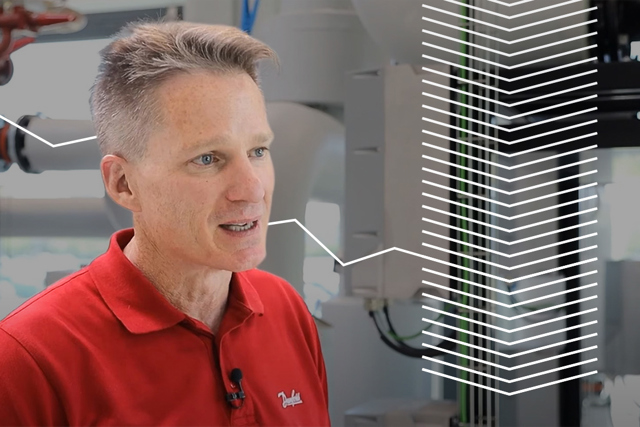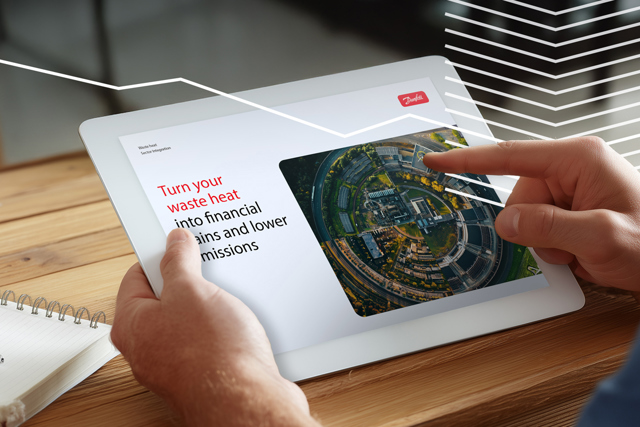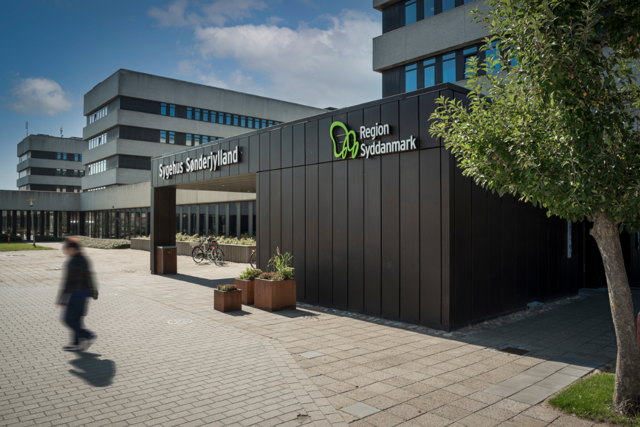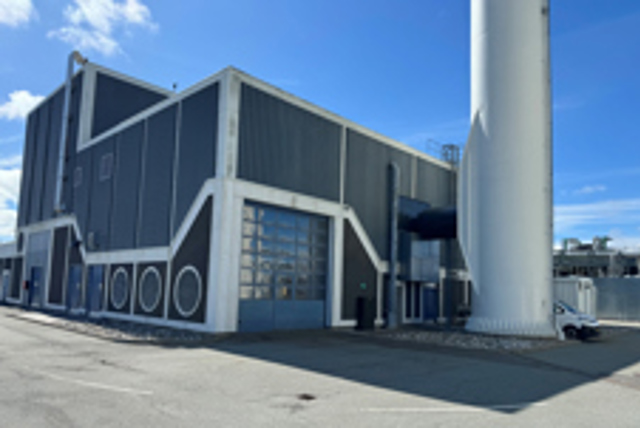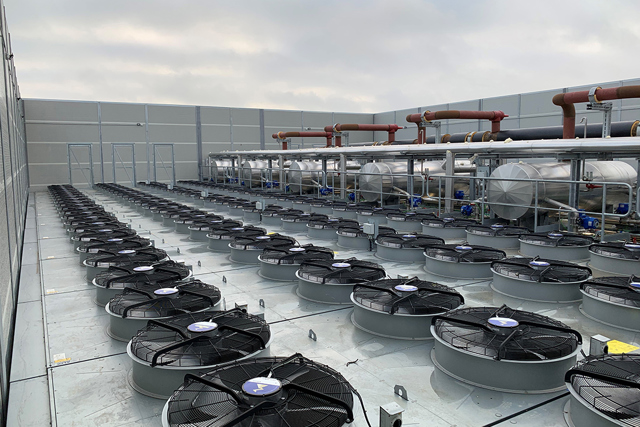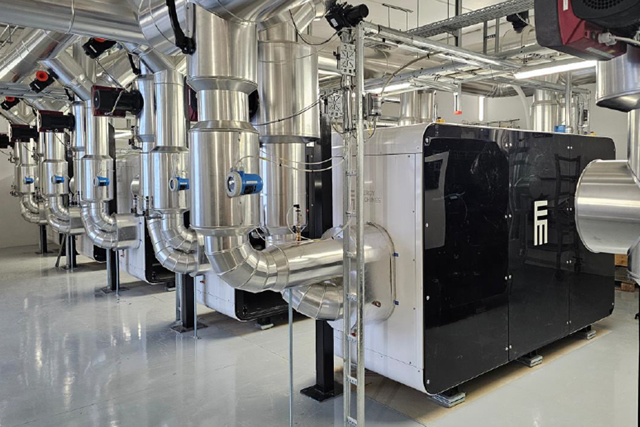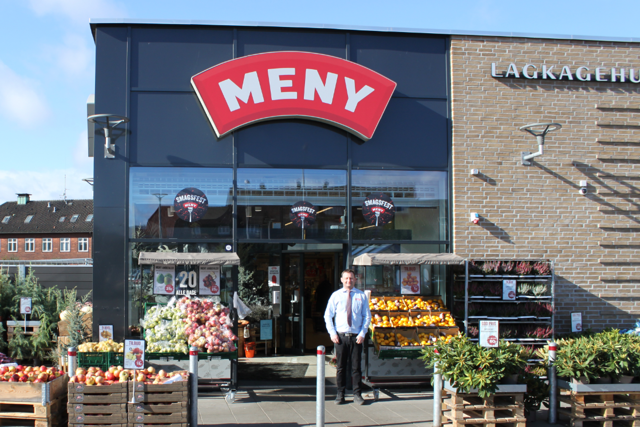Waste heat: A key to decarbonization
Why Waste Heat Recovery?
Many sources of waste heat, such as data centers, supermarkets, food processing facilities, industrial processes, hospitals and wastewater treatment plants, are currently underutilized. By reusing waste heat, we can lower costs for consumers by decreasing the demand for primary energy sources and reducing the need for additional heat generation. This not only saves money but also contributes to reducing emissions.
The impact
By implementing waste heat recovery comprehensively across the EU, we can potentially save €67.4 billion annually by 2050. Currently, over 267 TWh of excess heat from heavy industry is wasted each year—this is more than the combined heat generation of Germany, Poland and Sweden in 2021. In total, there is about 2,860 TWh/y of waste heat accessible in the EU, much of which could be reused. To put this number into perspective, it corresponds almost to the EU's total energy demand for heat and hot water in residential and service sector buildings across the European Union and the United Kingdom. (Read more in the dedicated whitepaper about excess heat.)
How it works
Waste heat recovery processes can be implemented both on-site and off-site. For off-site use, waste heat can serve as a major alternative heat source for district energy networks, supporting the decarbonization of utilities and buildings. On-site, waste heat can be reused within the same facility, offering significant cost savings and high returns on investment. Heat pumps can enhance the efficiency of waste heat recovery by capturing and reusing low-grade waste heat, making them 2-4 times more efficient than traditional heating methods..
Our vision
Waste heat recovery and integrated heat pump solutions present significant opportunities for businesses and the environment. By expanding district heating networks and microgrids and promoting on-site waste heat recovery, especially in facilities with simultaneous heating and cooling needs, we can establish waste heat recovery as a standard practice. This approach enhances energy efficiency, reduces costs and contributes to a sustainable, resilient energy landscape.
Heat Recovery Tool

Heat Recovery Tool
Try out our new Heat Recovery Tool that analyzes your heat source and consumption. The tool links data with current energy prices to provide tailored recommendations for your operation.
Benefits
How waste heat recovery benefits district heating networks
The environment:
Waste heat recovery reduces greenhouse gas emissions and other pollutants, contributing to improved air quality and climate goals.
Energy efficiency:
Utilizing waste heat enhances the overall efficiency of district heating systems by reducing the need for additional heat generation.
Cost savings:
Waste heat recovery can secure a fixed price of energy for extended periods, reducing the impact of energy cost increases.
Energy security:
By reducing dependence on fossil fuels, waste heat recovery provides a reliable source of heat and power for local consumers.
Socio-economic impacts:
Industrial waste heat recovery boosts the industry competitiveness and supports the decarbonization of heat and power for communities, businesses and public authorities.
Increased compliance:
European policies recognize waste heat recovery as a crucial solution for achieving climate and energy goals, promoting its adoption across various sectors.
Legislation
Legislation creating a burning platform for waste heat recovery implementation
Legislation plays a crucial role in advancing waste heat recovery by setting standards, providing incentives and creating opportunities for businesses and municipalities. The urgency to act is clear: stakeholders who fail to embrace these legislative drivers risk falling behind in a rapidly evolving energy landscape.
Here are some key legislative drivers based on the new framework of the Clean Industrial Deal and the much-needed implementation of existing policies, particularly the Energy Efficiency Directive (EED) and the Renewable Energy Directive (RED III). With the Clean Industrial Deal, more opportunities are expected to arise and further improvement of the conditions to accelerate the uptake of waste heat recovery.
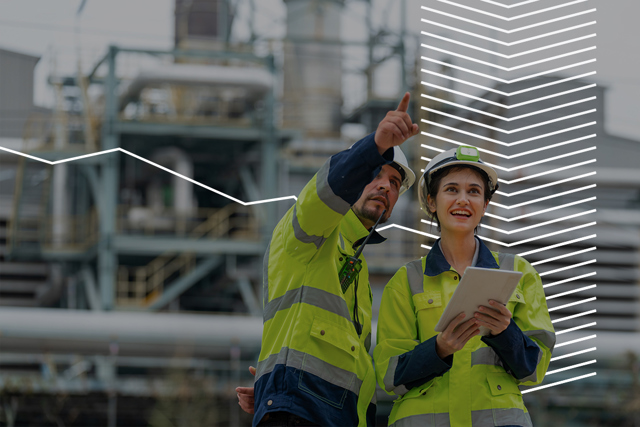
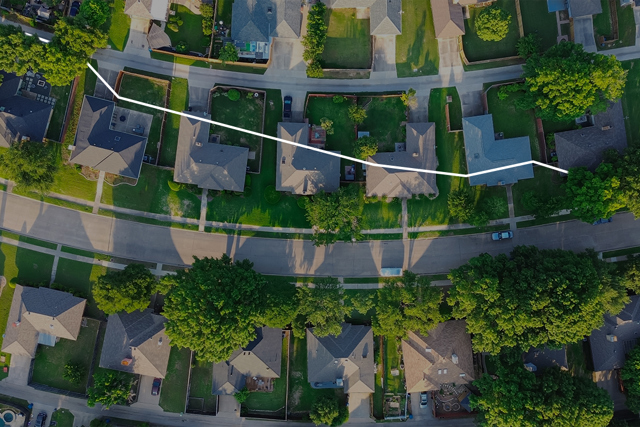
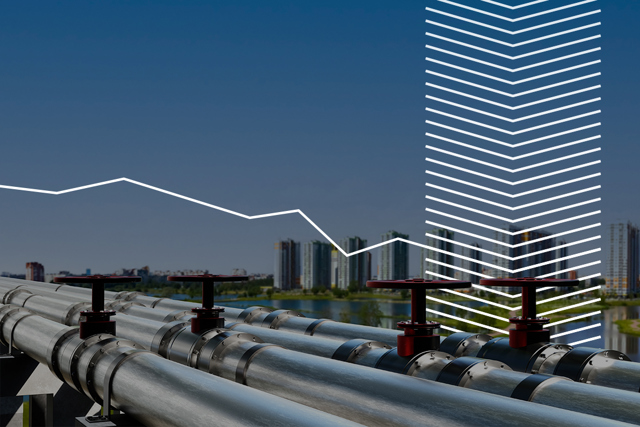
Solutions
Our solutions for waste heat recovery and reuse

Leanheat® Network
Plan, visualize and optimize a sustainable network operation
Leanheat® Network is a thermo-hydraulic modeling tool, developed specifically for use in district energy systems to support planning, design and operational processes.
- Network design to build and maintain models
- Simulate hydraulic and thermal conditions in your district heating network
- Optimize network supply temperatures and pressure conditions
- Predict and interpret future network consumption using AI
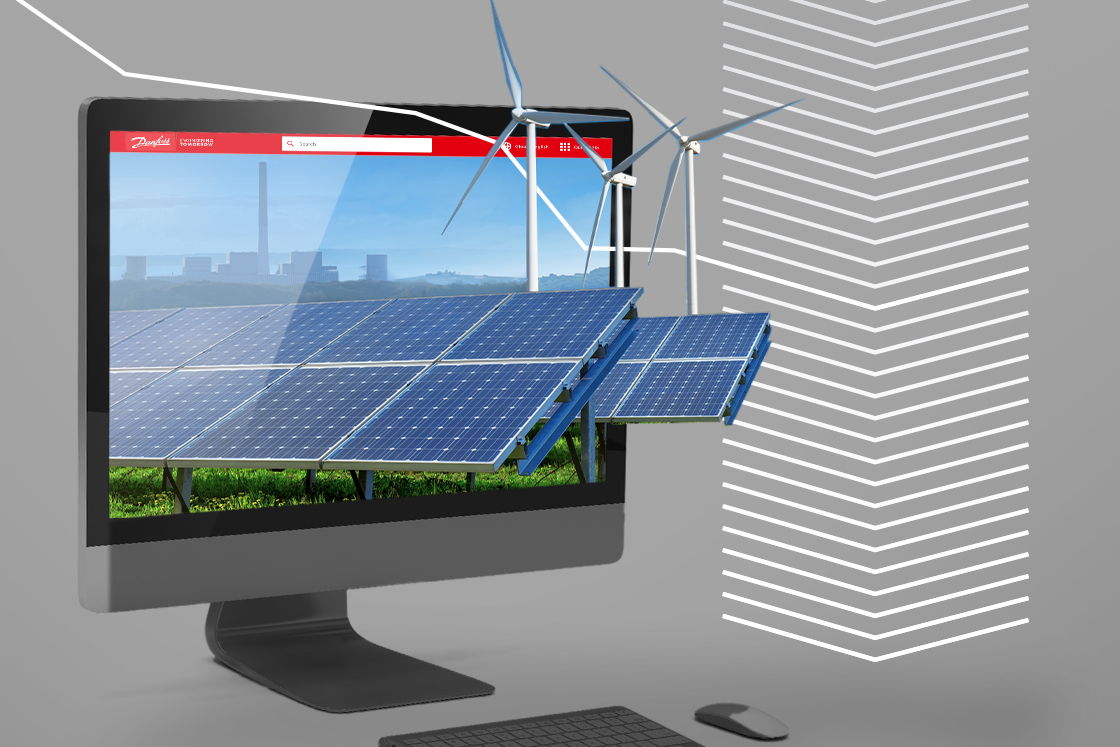
Leanheat® Production
Leverage data to maximize energy efficiency
Leanheat® Production is an advanced software tool for forecasting, planning and optimizing district energy production and distribution. The future-proof software helps adjust, reduce and optimize energy consumption.
- Load forecasting predicts exact in-network heat consumption '
- Reduce heat loss by 5-10 % by optimizing temperatures
- Save between 1-3% on fuel costs by optimizing production
- Low ROI between 6 months to 2 years
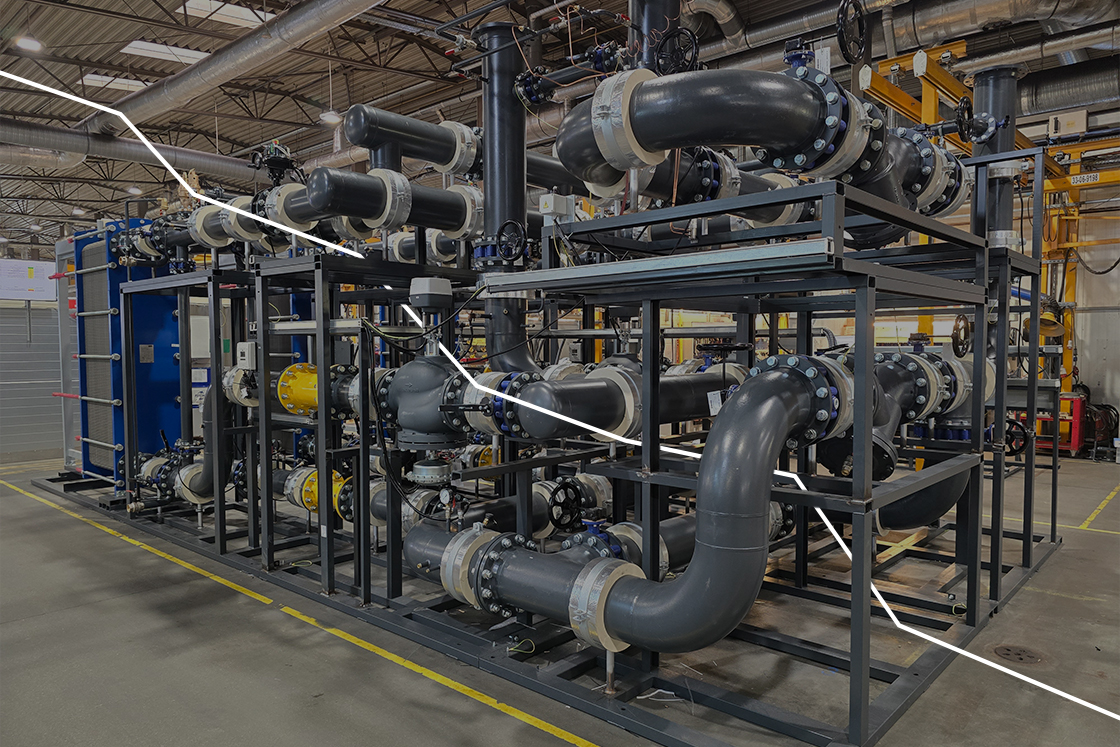
Heat Recovery Module for reducing data centers’ CO₂ footprint and overall operational cost
The Danfoss Heat Recovery Module (HRM) helps eliminate the technical challenges of managing heat recovery in data centers. The HRM is an integrated modular solution for data center waste heat recovery. Recovered heat can be sold to district heating grids or nearby office complexes and neighborhoods.

Heat Recovery Unit for reducing supermarket heating costs and CO₂ footprint
The Danfoss Heat Recovery Unit (HRU) helps to eliminate the technical challenges of managing heat recovery. The HRU is an integrated solution that manages and buffers the heat from the CO2 refrigeration pack, enabling it to be reused for space heating, hot tap water, or sold to district heating grids.
See the possibilities of waste heat recovery
Find out more about how our waste heat recovery technologies can help you capture and reuse waste heat from your industrial processes, so you can reduce your carbon footprint and operational cots while boosting energy efficiency.
Case stories
Waste heat recovery in action
Harnessing waste heat from data centers
Data centers are the backbone of our digital world, processing vast amounts of data every second. However, they consume significant amounts of electricity, with global demand projected to more than double by 2030, reaching around 945 terawatt-hours (TWh). The rise of AI further increases demand. For example, in the United States, power consumption by data centers is expected to account for almost half of the growth in electricity demand between now and 2030.
The potential for recoverable waste heat from data centers is significant. In 2020, it was estimated that data centers could recover up to 1 TWh of waste heat, enough to heat approximately 100,000 housing units. By 2030, this potential is expected to increase to 3.5 TWh, driven by the growth in the number of data centers.
References:
Waste heat recovery in data centers is driven by several key factors:
Energy Efficiency:
Data centers consume significant amounts of energy, primarily for powering servers and cooling systems. Recovering and reusing waste heat can significantly improve overall energy efficiency.
Cost Savings:
By repurposing waste heat, data centers can reduce their energy costs. This is particularly beneficial in regions with high energy prices.
Environmental Impact:
Reducing the environmental footprint is a major driver. Waste heat recovery helps lower greenhouse gas emissions, supports sustainability goals and is positively reflected in CSRD reporting.
Regulatory Compliance:
Legislation such as the European Energy Efficiency Directive (EED) requires data centers generating over 1 MW to recover their waste heat if it is technically and economically feasible. Moreover, future sustainability rating schemes may use the Energy Reuse Factor (ERF) as one of the KPIs. Compliance with such regulations is a strong motivator.
Circular Economy:
Embracing circular economy principles, data centers can repurpose waste heat for various applications, such as heating residential buildings, offices, and public facilities, or supporting agricultural systems.
Technological Advancements:
Innovations in heat recovery systems, AI, and automation are making it easier and more efficient to capture and reuse waste heat.
Contact us
Meet our heat waste expert
Drew Turner, Director, Sector Coupling Solutions
Ready to unlock the potential of waste heat and turn it into a valuable resource?
Contact us to explore how our waste heat recovery technologies can help you cut emissions, reduce energy costs and enhance sustainability.
Fill out the form below to connect with our experts.
Unlock the grid
As the complexity of today’s district energy networks increase, so does the potential they hold for ensuring ultimate cost-effectiveness, energy efficiency, and resilience. Discover how digitalization is the fundamental lever to unlocking an optimized grid—from production to distribution and consumption.


